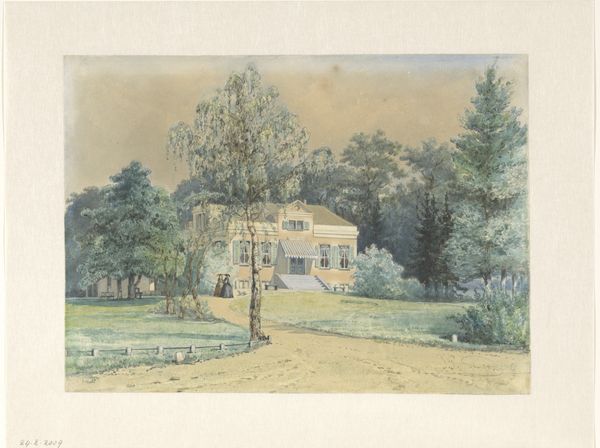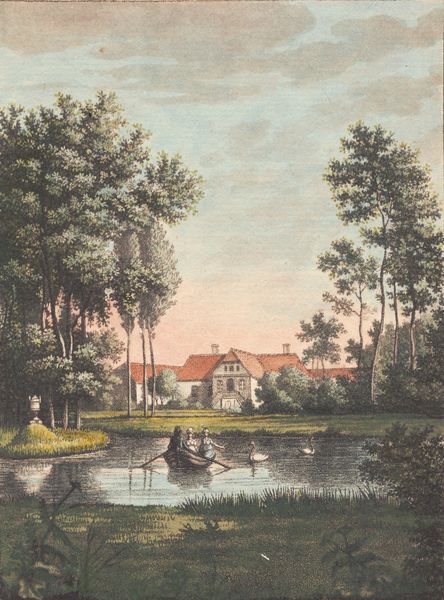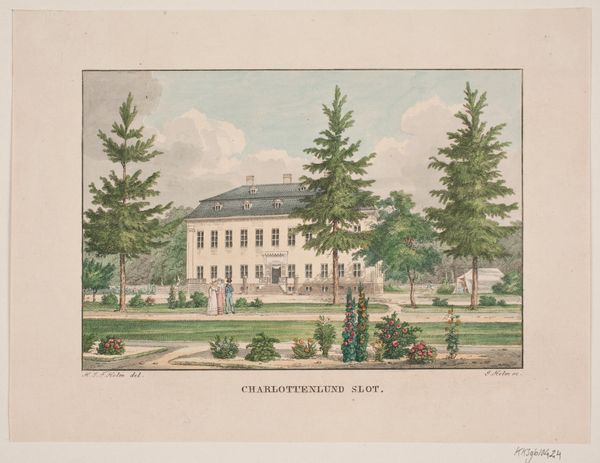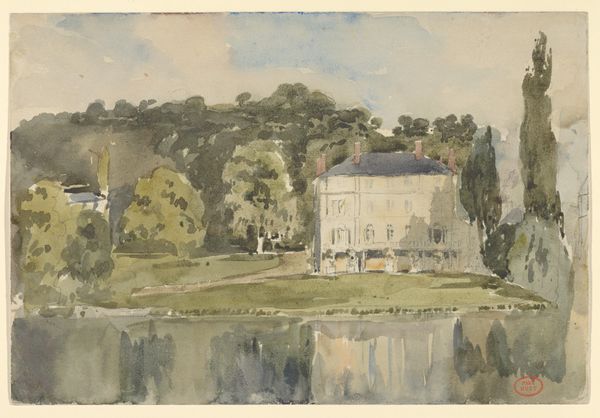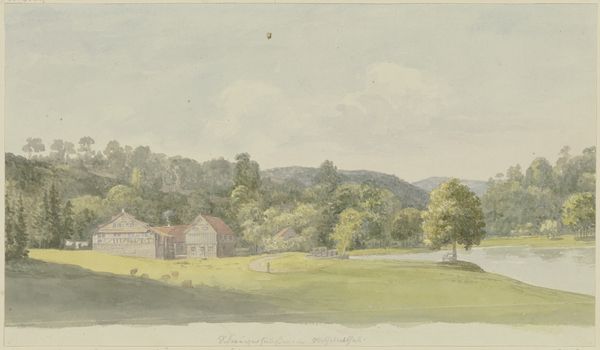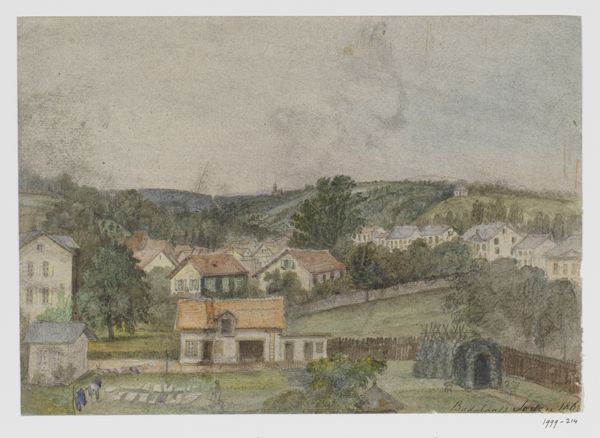
drawing, painting, watercolor, graphite, architecture
#
drawing
#
neoclacissism
#
painting
#
landscape
#
watercolor
#
coloured pencil
#
graphite
#
architecture
Copyright: Public Domain
Curator: At first glance, this image strikes me with its almost ethereal calm. Editor: Agreed. It has this subdued, almost muted palette that conveys such a serene atmosphere. What are we looking at precisely? Curator: This is "See in Wilhelmstal bei Eisenach," created around 1805 by Georg Melchior Kraus. It appears to be a work using graphite and watercolor and, possibly, colored pencil, and it depicts a scene in Wilhelmstal, near Eisenach. Kraus, by this time, was pretty deeply engaged in the Neoclassical style, focusing here on landscape. Editor: Looking at that very intentional composition, it’s fascinating how he positions this very refined architectural structure within a natural setting. You've got the almost austere building offset against the reflections on the water, softening that potentially stark Neoclassical statement. What do you think Kraus was aiming to communicate with this contrast? Curator: Kraus was the director of the Weimar Princely Free Drawing School, and a major part of his ethos was the integration of art and life. Landscapes served not just as pretty scenes but also as records of societal progress and the influence of enlightened patrons. Wilhelmstal, notably, was a popular retreat for the Weimar court. So there’s likely an intentional nod towards civic virtues through that lens. The water serves not only as a reflector of the beautiful estate, but of an idyllic scene of social life with its little pleasure boat. Editor: It speaks to that very human impulse to reshape and reimagine our surroundings, and how intertwined landscape is with class, power, and leisure. Do you think Kraus considered any tension in representing that dynamic, the relationship between nature and the elite? Curator: Likely, in a subtle and admiring fashion, especially when we remember the socio-political context. The patrons influenced the art world heavily, and a piece like this served both as an aesthetic endeavor and as a form of soft-power diplomacy of sorts, capturing idealized locales favored by people in elevated social positions. But let’s not ignore that beautiful landscape itself. I find the light delicate but well captured and suggestive of depth, even at a small scale. Editor: Yes, Kraus balances celebration with contemplation very effectively, not really shying away from the complexity inherent in representations like this one. Curator: Definitely. "See in Wilhelmstal bei Eisenach" encapsulates much about its time: the aesthetics, the power dynamics, and the delicate dance between nature and artifice. Editor: I agree. There’s something remarkably gentle and enduring in how Kraus captured that specific historical moment, a window into the past that remains quite resonant.
Comments
No comments
Be the first to comment and join the conversation on the ultimate creative platform.


